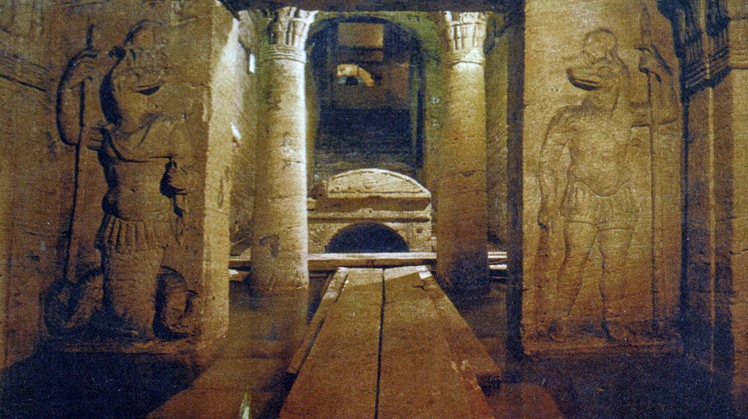There are many archaeological areas in Egypt that bear witness to the succession of great civilizations through different historical eras. From ancient Egyptian, Greek, Roman, Coptic and Islamic monuments to the antiquities of the modern era, architectural and artistic vocabulary varies between places of worship, tombs, obelisks, and palaces, each with its own distinctive character. and its aesthetics, so we will review through the next lines one of the archaeological sites that were unique to Egypt, the archaeological tombs of Kom El Shoqafa.
These tombs are located in the Kom el-Shaqafa area, south of the Mina al-Basal district, and are considered one of the most important cemeteries of Alexandria. The area was named by that name due to the large number of pottery remains and fragments that were accumulating in this place. It consists of three floors underground, and it is one of the clearest examples of the blending of Egyptian art with Roman art.
These tombs were found by chance on September 28, 1900, and are dated to the period between the first and second centuries AD. The museum garden includes the cemetery of Tigran, Estagni (Wardian Cemetery), Silvago, and some archaeological finds.
The cemetery consists of three levels excavated in the rock under the surface of the earth. It was recently reached after lowering the groundwater level in 1995 to the second level. The third level is still submerged in groundwater, which represents the main problem facing this cemetery. 502 rare artifacts were found in the area, including 39 coffins. And 17 sphinxes, 156 bases and capitals, and 7 gutters, in addition to nearly 300 unclassified artifacts.
 Thu, Dec. 23, 2021
Thu, Dec. 23, 2021